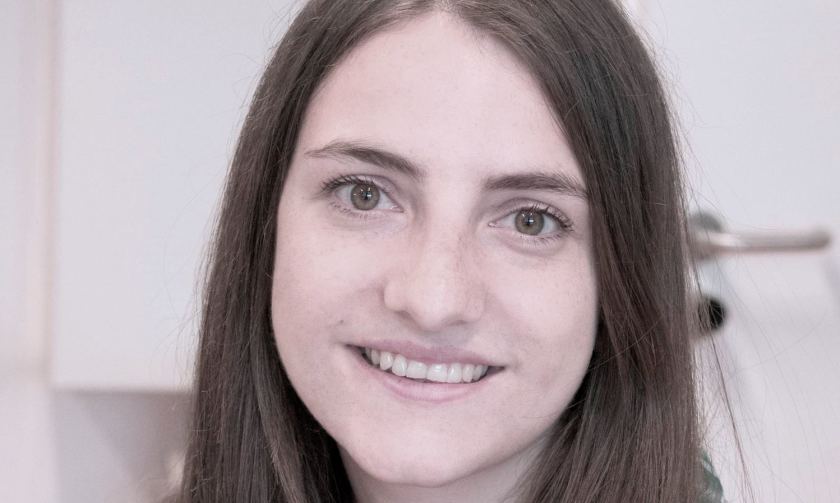Outstanding master thesis on the structure and function of a bacterial enzyme honoured

Lena Graß has received an award by GBM for her master thesis. © FU Berlin
On December 17, 2018, Lena Graß, a PhD student from the Structural Biochemistry Group at Freie Universität Berlin, was awarded the Master Prize of the Gesellschaft für Biochemie und Molekularbiologie e.V. (Society for Biochemistry and Molecular Biology) (GBM). For her master thesis at Freie Universität Berlin and the MX beamlines of BESSY II, she deciphered the structure and function of a so-called RNA helicase.
These bacterial enzymes can alter the activities of RNA molecules and influence the life cycle of bacteria. As part of her master's thesis, Lena Graß investigated a RNA helicase from the intestinal bacterium Escherichia coli. A closely related enzyme from the bacterium Borrelia burgdorferi, the causative agent of borreliosis, is essential for the infectivity of these bacteria. A better understanding of this enzyme could help to develop new drugs to block the enzyme.
Graß produced the enzyme using genetic engineering methods. Using macromolecular X-ray crystallography on the MX beam tubes of the Joint Berlin MX Laboratory at BESSY II, Graß was able to elucidate how the enzyme is constructed and folded in detail.
Graß began her master's degree in biochemistry at the Eberhard Karls University of Tübingen in 2015 and completed her master's thesis in the structural biochemistry group of the Freie Universität Berlin in cooperation with the macromolecular crystallography group at the Helmholtz-Zentrum Berlin. At the beginning of 2018, she completed her master's degree with the highest grade. She is currently doing her doctorate in the structural biochemistry group at Freie Universität.
red.
-
Freeze casting - a guide to creating hierarchically structured materials
Freeze casting is an elegant, cost-effective manufacturing technique to produce highly porous materials with custom-designed hierarchical architectures, well-defined pore orientation, and multifunctional surface structures. Freeze-cast materials are suitable for many applications, from biomedicine to environmental engineering and energy technologies. An article in "Nature Reviews Methods Primer" now provides a guide to freeze-casting methods that includes an overview on current and future applications and highlights characterization techniques with a focus on X-ray tomoscopy.
-
IRIS beamline at BESSY II extended with nanomicroscopy
The IRIS infrared beamline at the BESSY II storage ring now offers a fourth option for characterising materials, cells and even molecules on different length scales. The team has extended the IRIS beamline with an end station for nanospectroscopy and nanoimaging that enables spatial resolutions down to below 30 nanometres. The instrument is also available to external user groups.
-
A simpler way to inorganic perovskite solar cells
Inorganic perovskite solar cells made of CsPbI3 are stable over the long term and achieve good efficiencies. A team led by Prof. Antonio Abate has now analysed surfaces and interfaces of CsPbI3 films, produced under different conditions, at BESSY II. The results show that annealing in ambient air does not have an adverse effect on the optoelectronic properties of the semiconductor film, but actually results in fewer defects. This could further simplify the mass production of inorganic perovskite solar cells.
